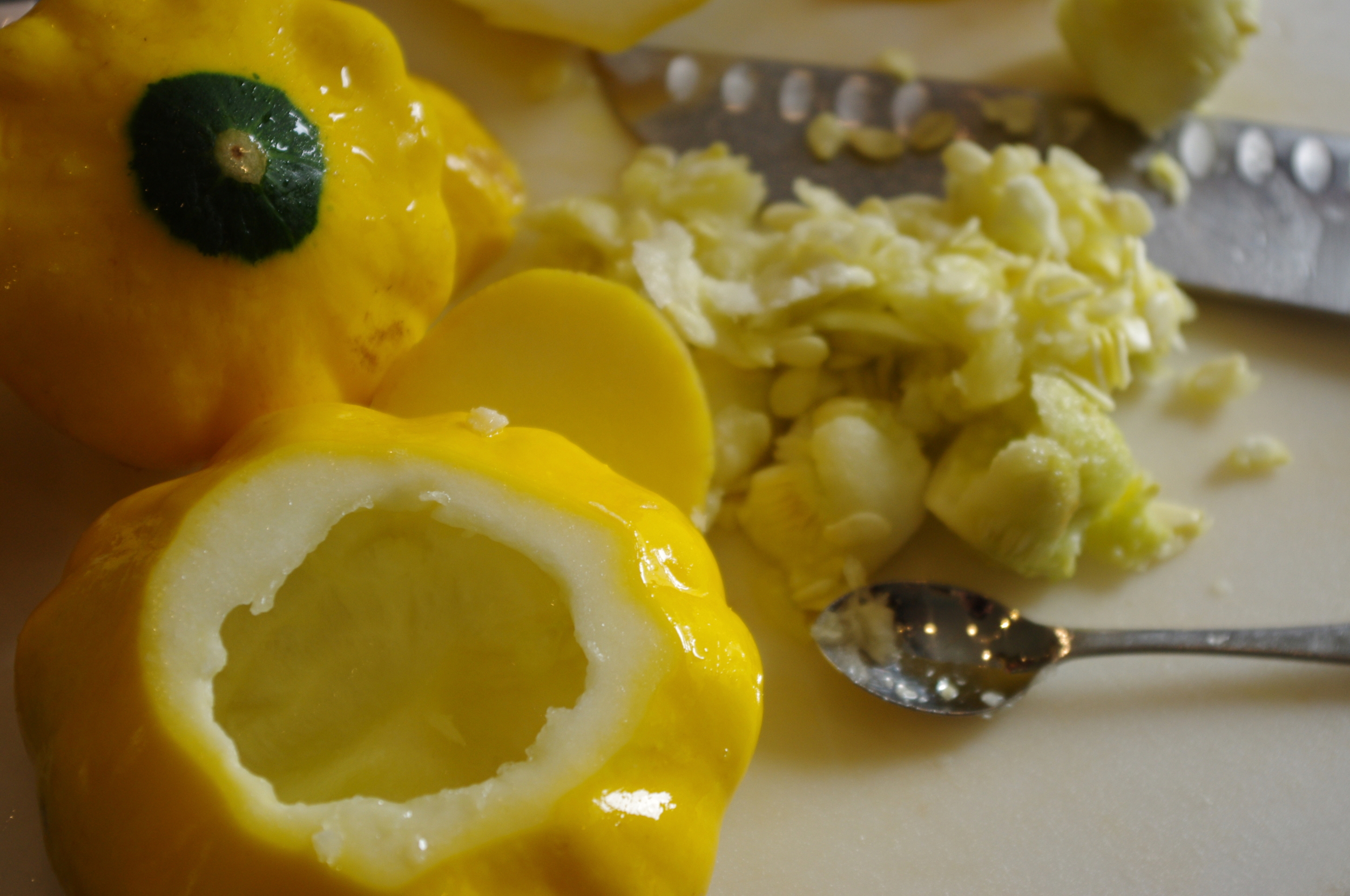This is an exceptionally versatile dish, which can be made many ways to suit your taste or dietary needs. Essentially: Eggplant and spaghetti sauce go really well together. Traditional lasagna is a delicious comfort food, but often comes with a lot of fat, carbohydrates, and not enough protein or fiber to offer balanced nutrition. The version in the photograph has thin strips of eggplant instead of traditional lasagna noodles. It also has no cheese, but is topped with a scrumptious mixture of grated squash, panko breadcrumbs, olive oil and herbs. The result is a really delicious high-protein, high-fiber, lower-fat version of lasagna with a flavorful, crispy topping.
Ingredients:
Sauce:
If you have a lot of fresh tomatoes, or tomatoes canned from earlier in the year and want to use them, try this recipe for Fresh Tomato Marinara. However, if you are using store-bought cans of tomatoes, this is a delicious, authentic Italian tomato sauce recipe:
28 oz can of good quality Crushed Tomatoes
6 oz can of good quality Tomato Paste
1 medium Yellow Onion, diced
6 cloves of Garlic, minced
3 Bay Leaves
1 cup Dry Red Wine
Kosher Salt
Freshly ground Black Pepper
1 Tbs Herbs De Provence or Kitchen Karma Mediterranean herb blend
1 lb grass-fed Ground Beef (optional)
Layers:
1 1/2 -2 lbs Eggplant, sliced into 1/8 th inch slices, lengthwise
Olive oil
Herbs De Provence or Kitchen Karma Mediterranean herb blend
Kosher Salt
1 cup Panko Breadcrumbs
1 medium zephyr squash or zucchini, grated or julienned (optional)
Method:
If using ground beef, place in a medium stock pot and break into small bits with a spatula or cooking spoon. Season well with kosher salt, black pepper and herb blend. Cook on medium-high heat, stirring often, until browned.
Add diced onion and minced garlic and cook one minute more. (If preparing a meatless recipe, saute onion and garlic with a little olive oil on medium-low heat for 2-3 minutes. Stir often and do not let the garlic scorch.)
Add the red wine, crushed tomatoes, tomato paste, and bay leaves. Stir until combined, then reduce heat to low, cover and simmer for at least one hour, but longer if you have time. Stir occasionally. The longer the sauce cooks, the more complex the flavors will be. Natural sugars in the wine, tomatoes and onions will sweeten the sauce with longer cooking times. Shorter cooking time will produce a tangier sauce.
Tips:
After cooking the sauce, remove from heat and let rest for one hour before assembling the lasagna. Letting the sauce rest will improve the flavors. Cooking one day ahead, refrigerating the sauce, then layering the lasagna on the second day will also produce a very flavorful sauce.
Layering:
Preheat oven to 375 degrees. Place slices of eggplant on a parchment lined baking sheet and brush with a little oil on both sides. Season with a little kosher salt.
Place in the oven and bake for about 15 minutes, or until the slices have dehydrated a little and begin to brown. remove from the oven and let cool.
In a high-sided baking dish, put a layer of meat sauce or marinara in the bottom of the dish. Top with a layer of eggplant, then meat, etc. When you run out of eggplant, cover with a layer of sauce.
Mix together the grated squash, breadcrumbs, a little olive oil, and seasonings. Spread the mixture on the top of the lasagna. Bake in the center of the oven for about 40 minutes. Remove from oven and let cool for 20 minutes before serving.










